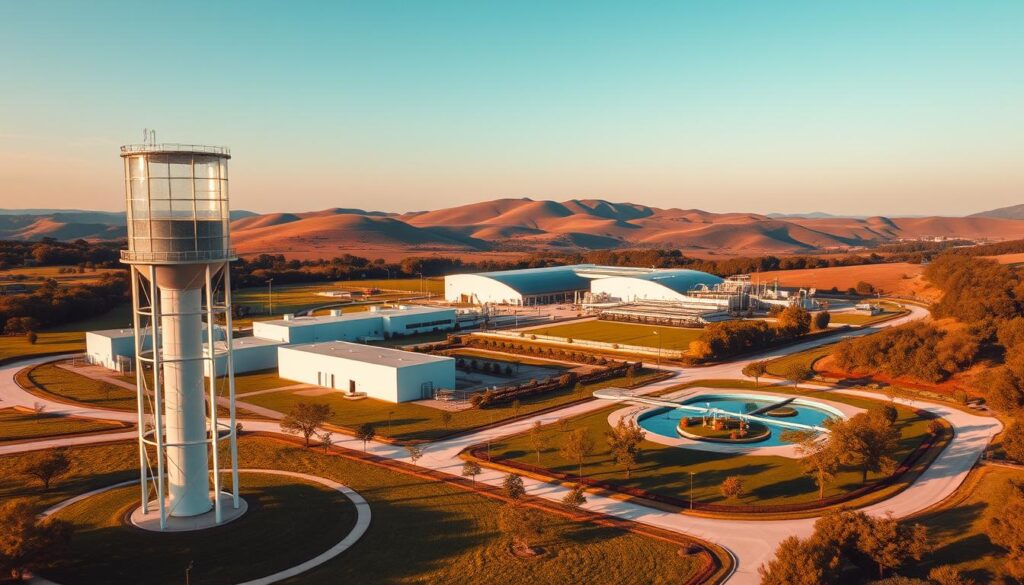Can a community thrive without access to clean drinking water?
This question is at the heart of potable water project design. Designing a reliable water supply system is crucial for the well-being of any community.
A well-designed drinking water project involves multiple steps, from understanding the importance of potable water to adhering to regulations and design considerations.
Key Takeaways
- Understanding the importance of potable water in community development
- Key regulations governing water supply system design
- Design considerations for a reliable drinking water project
- Step-by-step guide to designing a potable water project
- Best practices for ensuring a safe and sustainable water supply
Understanding Potable Water and Its Importance
Potable water plays a vital role in sustaining public health and preventing waterborne diseases. It is essential for drinking, cooking, and personal hygiene. The availability of potable water is a critical factor in determining the health and well-being of communities worldwide.
Definition of Potable Water
Potable water is defined as water that is safe, healthy, and suitable for human consumption. It must be free from harmful bacteria, viruses, and other pathogens that can cause illness. The quality of potable water is determined by various factors, including its source, treatment, and distribution.
Safe drinking water is a fundamental human need, and access to it is recognized as a basic human right. Ensuring that water is potable involves a series of processes, from sourcing to treatment and finally to distribution.
Importance for Public Health
The importance of potable water for public health cannot be overstated. Clean water is crucial for preventing the spread of waterborne diseases such as cholera, typhoid, and dysentery. By having access to safe drinking water, communities can significantly reduce the risk of these diseases, thereby protecting public health.
Moreover, potable water is essential for maintaining hygiene and sanitation standards. It is used not only for drinking but also for cooking, washing, and other personal hygiene practices. The availability of clean water is directly linked to the overall health and well-being of a population.
Environmental Considerations
The treatment and distribution of potable water have significant environmental considerations. The process of treating water to make it potable can have environmental impacts, such as energy consumption and the use of chemicals. Additionally, the distribution infrastructure can affect ecosystems and water resources.
Therefore, it is crucial to adopt sustainable practices in the treatment and distribution of potable water. This includes using energy-efficient technologies and minimizing the environmental footprint of water infrastructure projects. By doing so, we can ensure that the provision of potable water is not only beneficial for public health but also environmentally sustainable.
Key Regulations Governing Potable Water
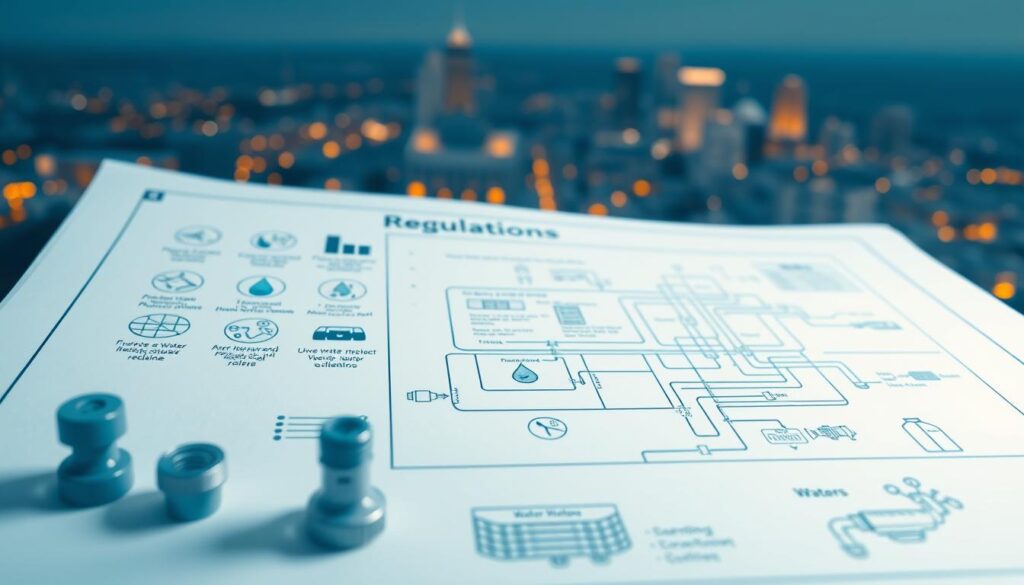
Understanding the regulatory landscape is essential for the successful design of potable water systems. The regulatory framework for potable water includes federal, state, and local regulations, as well as drinking water quality standards.
Federal Guidelines
Federal guidelines provide a baseline for potable water quality across the United States. These guidelines are established by agencies such as the Environmental Protection Agency (EPA) and are crucial in ensuring a uniform standard of water quality nationwide. For instance, the Safe Drinking Water Act sets forth standards that water systems must adhere to.
The EPA plays a pivotal role in enforcing these standards, providing guidance, and overseeing the implementation of water quality regulations. Compliance with federal guidelines is mandatory, and water utilities must adhere to these regulations to ensure the water they supply is safe for consumption.
State and Local Regulations
While federal guidelines set a national standard, state and local regulations can be more stringent, reflecting regional conditions and concerns. State health departments and environmental agencies are typically responsible for enforcing these regulations, which may include additional testing requirements or stricter limits on contaminants.
Local regulations can further tailor the requirements to the specific needs of a community, addressing local issues such as source water protection and infrastructure development. Understanding these regulations is crucial for the design and operation of potable water systems.
Drinking Water Quality Standards
Drinking water quality standards are at the heart of potable water regulations, defining the acceptable levels of various contaminants and the required treatment processes. These standards are designed to protect public health by ensuring that drinking water is safe and free from harmful substances.
The standards cover a wide range of parameters, including microbiological contaminants, chemical pollutants, and physical characteristics of water. Regular monitoring and testing are essential to ensure compliance with these standards and to identify any potential issues before they become a public health risk.
By adhering to these regulations and standards, water utilities can ensure the delivery of safe, high-quality drinking water to consumers, thereby protecting public health and maintaining trust in the water supply system.
Initial Assessment for Water Needs
Assessing water needs is crucial for ensuring that a potable water project is both effective and sustainable. This initial assessment involves a comprehensive analysis of the community’s requirements, an evaluation of the current water supply infrastructure, and projections for future demand.
Community Needs Analysis
A thorough community needs analysis is essential for understanding the demographic and socio-economic factors that influence water demand. This includes analyzing population growth trends, water usage patterns, and identifying any specific needs or challenges faced by the community.
Key factors to consider in a community needs analysis:
- Population size and growth rate
- Water usage patterns
- Socio-economic status
- Existing water infrastructure
Current Water Supply Evaluation
Evaluating the current water supply infrastructure is vital for determining its capacity to meet the community’s needs. This involves assessing the condition, age, and technology used in the existing water supply system.
Future Demand Projections
Projecting future water demand is critical for ensuring that the designed potable water project is sustainable and can meet the community’s needs over time. This involves analyzing trends in population growth, changes in water usage patterns, and other factors that may impact future demand.
| Factor | Current Status | Future Projection |
|---|---|---|
| Population Size | 100,000 | 120,000 (in 5 years) |
| Water Usage | 200 liters per capita per day | 220 liters per capita per day (in 5 years) |
| Water Supply Capacity | 25 million liters per day | 30 million liters per day (required in 5 years) |
By conducting a thorough initial assessment of water needs, including community needs analysis, current water supply evaluation, and future demand projections, potable water projects can be designed to be more effective, sustainable, and responsive to the community’s needs.
Preliminary Site Investigations
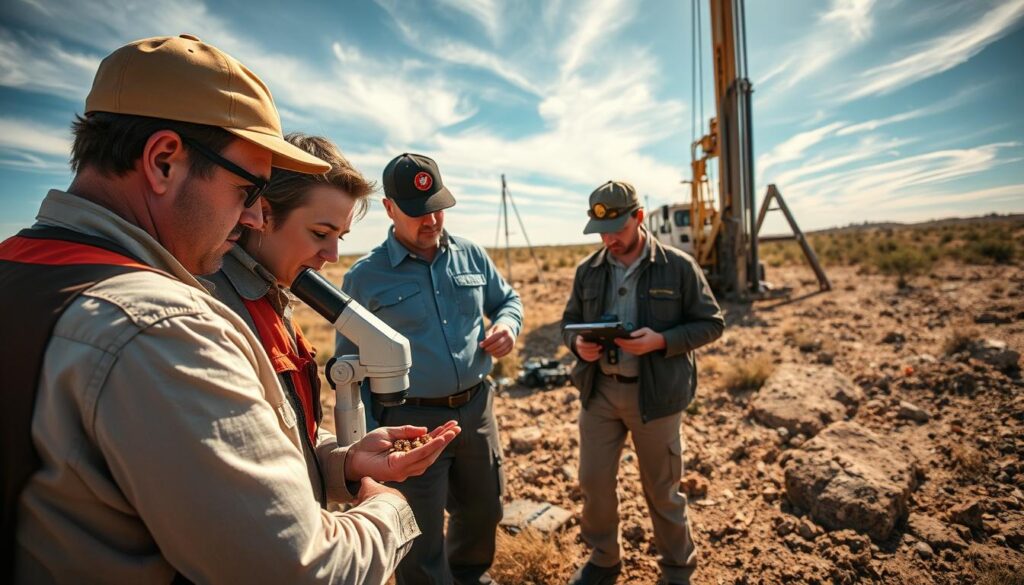
Preliminary site investigations are a critical step in the potable water project design, laying the groundwork for a successful and sustainable water supply system.
These investigations are multifaceted, involving several key components that help in understanding the site conditions and identifying potential water sources.
Geological Surveys
Geological surveys are a crucial part of preliminary site investigations, providing insights into the subsurface conditions of the project site.
By analyzing the geological data, project designers can determine the suitability of the site for various water supply infrastructure, such as wells or reservoirs.
Water Source Identification
Identifying viable water sources is another critical aspect of preliminary site investigations.
This involves assessing both surface water and groundwater resources to determine their quality, quantity, and reliability.
Environmental Impact Assessments
Environmental impact assessments are essential for understanding the potential ecological footprint of the potable water project.
These assessments help in identifying potential environmental risks and devising strategies to mitigate them, ensuring that the project is environmentally sustainable.
By conducting thorough preliminary site investigations, project designers can ensure that the potable water supply system is not only effective but also environmentally responsible.
Designing the Water Treatment System
A well-designed water treatment system is essential for public health and environmental sustainability. The process involves evaluating different treatment methods and technologies, selecting the most appropriate ones based on the water quality and project requirements, and designing the system layout and flow to ensure efficient operation.
Types of Treatment Methods
Water treatment methods can be broadly categorized into physical, chemical, and biological processes. Physical treatment methods include sedimentation, filtration, and distillation, which remove contaminants based on their physical properties. Chemical treatment involves the use of chemicals to remove or neutralize pollutants. Biological treatment methods utilize living organisms to break down organic matter.
- Sedimentation
- Filtration
- Distillation
- Chemical coagulation
- Biological processes
Criteria for Selecting Treatment Technologies
The selection of treatment technologies depends on several factors, including the quality of the raw water, the desired level of treatment, and the cost of operation and maintenance. A comparison of different treatment technologies is essential to identify the most suitable option.
| Treatment Technology | Effectiveness | Cost |
|---|---|---|
| Conventional Filtration | High | Moderate |
| Advanced Oxidation | Very High | High |
| Biological Treatment | Moderate | Low |
System Layout and Flow Design
The layout and flow design of the water treatment system are critical for its efficient operation. The design should ensure that water flows smoothly through the treatment process, with adequate contact time for each treatment step.
The system layout should also consider the space required for maintenance and the potential for future expansion. Proper design ensures that the water treatment system operates reliably and efficiently, providing safe drinking water to the community.
Sourcing Water Supply

Sourcing a reliable water supply is a fundamental aspect of designing a potable water project. The process involves several critical decisions that impact the overall viability and sustainability of the project.
Surface Water vs. Groundwater
The decision between using surface water and groundwater depends on various factors, including water quality, availability, and environmental considerations. Surface water sources, such as rivers, lakes, and reservoirs, are often more susceptible to contamination and seasonal fluctuations. On the other hand, groundwater is generally more reliable but can be more challenging and costly to extract.
A thorough analysis of both options is essential to determine the most suitable source for the potable water project. This involves assessing the quality and quantity of the water available from each source.
| Water Source | Quality Considerations | Availability |
|---|---|---|
| Surface Water | More susceptible to contamination | Variable, seasonal fluctuations |
| Groundwater | Generally more reliable quality | Dependent on aquifer capacity |
Securing Water Rights
Securing water rights is a crucial step in sourcing water supply. This involves understanding and complying with the legal framework governing water rights in the project’s jurisdiction. It is essential to engage with legal experts and local authorities to ensure that the project’s water supply is legally secured.
For more information on water supply and treatment services, visit Brown and Caldwell’s water supply and treatment.
Partnership with Local Authorities
Partnering with local authorities is vital for the success of a potable water project. This collaboration ensures that the project complies with local regulations and standards, and it facilitates the securing of necessary permits and approvals. Effective partnership also helps in addressing community concerns and fostering support for the project.
By carefully considering the options for sourcing water supply and engaging with relevant stakeholders, potable water projects can ensure a reliable and sustainable water supply for the communities they serve.
Distribution System Design
The distribution system design plays a vital role in ensuring that potable water reaches end-users safely. A well-designed distribution system is essential for maintaining water quality, managing pressure, and ensuring the overall reliability of the water supply network.
Pipe Sizing and Materials
One of the critical aspects of distribution system design is pipe sizing. Proper sizing ensures that water flows efficiently throughout the network, minimizing losses and maintaining pressure. The choice of pipe materials is also crucial, as it affects the durability and safety of the water supply. Common materials include PVC, ductile iron, and HDPE, each with its advantages and disadvantages.
The selection of pipe material depends on factors such as cost, durability, and resistance to corrosion. For instance, PVC pipes are cost-effective and resistant to corrosion, while ductile iron pipes offer high strength and durability.
Pressure Management
Effective pressure management is vital to prevent pipe bursts and ensure that water reaches all parts of the distribution network. This involves designing the system to maintain optimal pressure levels, using techniques such as pressure-reducing valves and surge protection devices.
Proper pressure management also helps in reducing leakage and minimizing energy consumption by optimizing pump operation.
Pump Station Design
Pump station design is another crucial element of distribution system design. Pump stations are used to boost water pressure and ensure that water is distributed throughout the network. The design of pump stations involves selecting appropriate pumps, designing the station layout, and incorporating control systems.
The design should also consider factors such as energy efficiency, reliability, and maintenance accessibility to ensure the long-term operation of the pump station.
In conclusion, a well-designed distribution system is critical for the safe and efficient delivery of potable water. By focusing on pipe sizing and materials, pressure management, and pump station design, water utilities can ensure a reliable water supply that meets the needs of the community.
Infrastructure and Facility Planning

The backbone of a successful potable water project lies in meticulous infrastructure and facility planning. This involves designing the various components that will ensure the efficient operation and maintenance of the water supply system.
Water Treatment Plant Components
A water treatment plant is composed of several critical components, including intake structures, treatment units, and sludge handling facilities. Efficient design of these components is crucial for producing water that meets or exceeds regulatory standards.
The selection of treatment technologies depends on the raw water quality, desired treated water quality, and other factors such as energy efficiency and cost. For more information on water infrastructure construction, visit Procore’s library on water infrastructure construction.
| Component | Description | Importance |
|---|---|---|
| Intake Structures | Facilities that withdraw water from the source. | High |
| Treatment Units | Processes that remove contaminants from the water. | High |
| Sludge Handling Facilities | Units that manage the waste generated during treatment. | Medium |
Storage Solutions
Adequate storage is essential for maintaining a consistent water supply. Storage tanks and reservoirs are designed to hold treated water until it is distributed to consumers.
Storage solutions must be designed with considerations for water quality, security, and accessibility. The capacity of storage facilities should be sufficient to meet peak demand periods.
Maintenance Access Requirements
Ensuring that maintenance personnel have safe and efficient access to all parts of the water treatment and distribution system is critical. This includes designing access roads, walkways, and maintenance bays.
Regular maintenance is facilitated by incorporating features such as valves, drains, and sampling points into the system design.
Financial Planning and Budgeting
Financial planning and budgeting are essential components of developing sustainable water infrastructure. A comprehensive financial plan ensures that potable water projects are viable and sustainable in the long term.
Cost Estimation Techniques
Accurate cost estimation is a critical aspect of financial planning. It involves assessing various components, including infrastructure development, equipment, and operational costs. Techniques such as bottom-up estimating, where individual costs are detailed and summed, can provide a comprehensive view of the total project cost.
For instance, a detailed cost estimation for a water treatment plant would include the costs of land acquisition, construction, equipment, and labor, as well as ongoing operational and maintenance expenses. Effective cost estimation can help in identifying potential areas for cost savings.
Funding Sources for Projects
Identifying viable funding sources is crucial for the success of potable water projects. Potential funding sources include government grants, loans from financial institutions, and public-private partnerships (PPPs). Each funding source has its advantages and disadvantages, and the choice depends on the project’s specific needs and circumstances.
- Government grants: These are non-repayable funds provided by government agencies for specific projects.
- Loans: Financial institutions offer loans with interest rates that vary based on the project’s risk profile.
- Public-Private Partnerships (PPPs): PPPs involve collaboration between government agencies and private sector companies to finance and deliver projects.
Creating a Financial Plan
A comprehensive financial plan outlines the financial strategy for the project, including budget allocation, funding sources, and financial projections. It should also include contingency plans to address potential financial risks.
The financial plan should be regularly reviewed and updated to reflect changes in project scope, costs, or funding availability. By having a robust financial plan, project developers can ensure that their potable water projects are financially sustainable and capable of delivering long-term benefits to the community.
Project Scheduling and Timeline
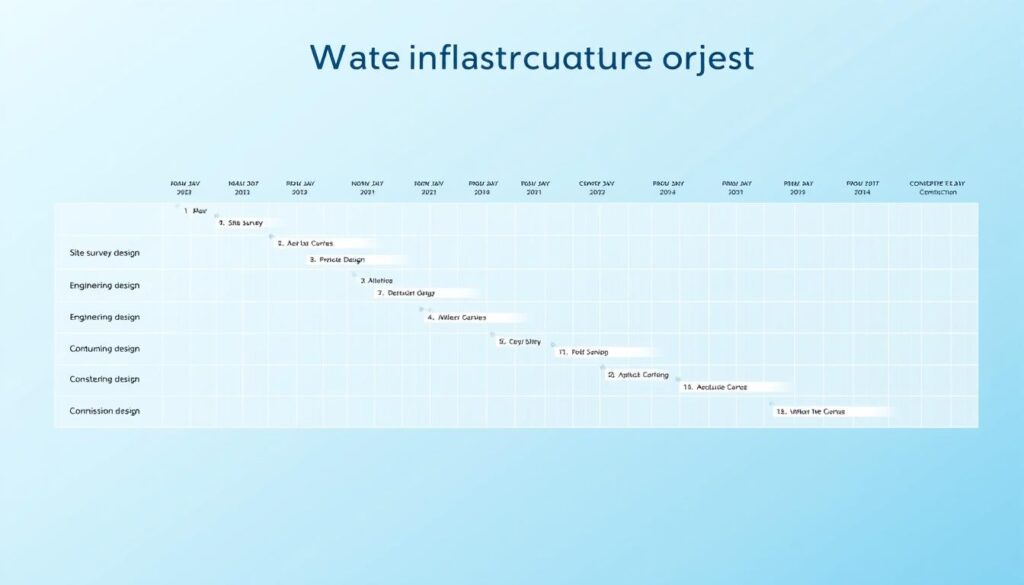
Effective project scheduling is crucial for the successful execution of a potable water project. It involves identifying key milestones, establishing a realistic timeframe for different phases, and incorporating risk management considerations to mitigate potential delays or issues.
Milestone Identification
Identifying milestones is a critical step in project scheduling. Milestones mark significant events or accomplishments in the project timeline, such as the completion of the design phase, the start of construction, or the commissioning of the water treatment plant. By breaking down the project into manageable milestones, project managers can track progress and ensure that the project stays on schedule.
Timeframe for Different Phases
Establishing a realistic timeframe for each phase of the project is essential for effective project scheduling. This involves estimating the duration of each task, considering dependencies between tasks, and allocating resources accordingly. A well-planned project schedule takes into account potential delays and contingencies, ensuring that the project is completed on time and within budget.
Risk Management Considerations
Risk management is an integral part of project scheduling. It involves identifying potential risks, assessing their likelihood and impact, and developing strategies to mitigate or manage them. Common risks in potable water projects include delays in land acquisition, changes in regulatory requirements, or unforeseen site conditions. By incorporating risk management considerations into the project schedule, project managers can minimize the impact of these risks and ensure the project’s success.
| Phase | Duration | Key Milestones |
|---|---|---|
| Design | 6 months | Completion of design phase, submission for regulatory approval |
| Construction | 18 months | Start of construction, completion of major infrastructure |
| Commissioning | 3 months | Commissioning of water treatment plant, final testing and inspection |
Stakeholder Engagement
The success of potable water projects heavily relies on comprehensive stakeholder engagement. This involves not just informing the public, but actively involving them in the decision-making process to ensure that the project meets their needs and expectations.
Identifying Key Stakeholders
Identifying key stakeholders is the first step in any stakeholder engagement strategy. These stakeholders can include local community members, government agencies, environmental organizations, and businesses that will be impacted by the water project. A thorough stakeholder analysis can help in understanding their interests, influence, and needs.
For instance, a study on urban water management highlights the importance of involving various stakeholders in the planning process to ensure sustainable practices water management research.
Communication Strategies
Developing effective communication strategies is crucial for successful stakeholder engagement. This can involve regular updates through various media channels, public meetings, and workshops. The goal is to keep stakeholders informed and to gather their feedback throughout the project lifecycle.
Effective leadership in project management also plays a significant role in facilitating communication among stakeholders, as discussed in project management insights.
Public Involvement and Feedback
Public involvement is a critical component of stakeholder engagement. It involves creating opportunities for the public to contribute to the project’s design and implementation. This can be achieved through public consultations, surveys, and feedback mechanisms.
By engaging the public and incorporating their feedback, potable water projects can better address community concerns and needs, ultimately leading to more successful outcomes in urban water management.
Implementing the Project
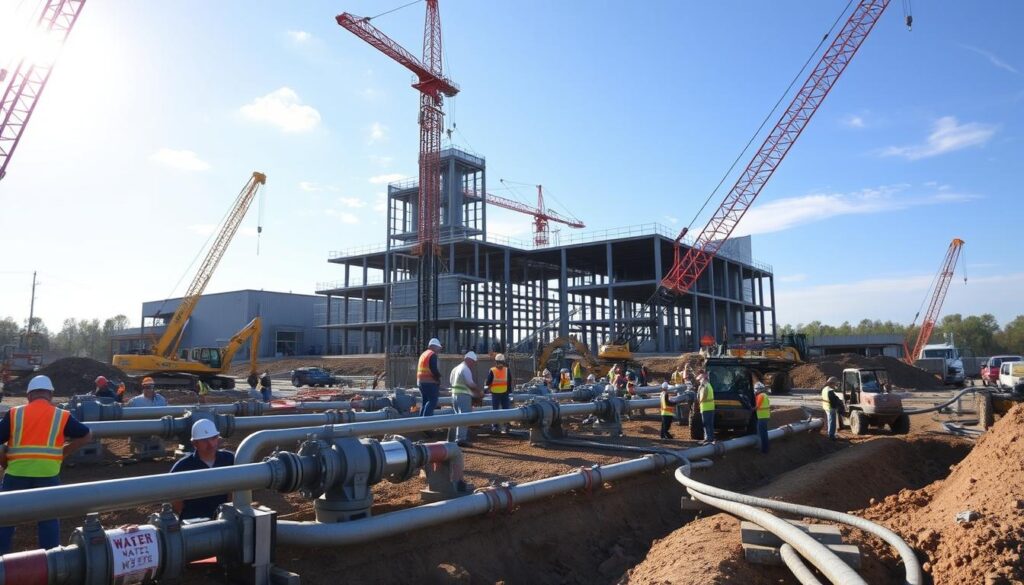
Implementing a potable water project involves several key steps, including construction, quality control, and safety measures. This phase is critical as it transforms the designed system into a functional reality.
Construction Phase Overview
The construction phase is where the actual building of the potable water system takes place. It involves water engineering services to ensure that the project is executed according to the design specifications. This phase requires meticulous planning, coordination, and execution to stay on schedule and within budget.
Effective project implementation during the construction phase involves managing various stakeholders, including contractors, suppliers, and local authorities. For detailed guidelines on managing such projects, refer to resources like the Missouri Department of Natural Resources’ guide on planning drinking water system.
Quality Control Measures
Quality control is paramount during the construction phase to ensure that the potable water system meets the required standards and specifications. This involves regular inspections, testing of materials, and verification of workmanship.
Implementing robust quality control measures helps in identifying and addressing potential issues early on, thereby reducing the risk of costly rework or system failures down the line. It’s essential to have a comprehensive quality control plan in place, which outlines the procedures for monitoring and controlling the quality of the work.
Safety Protocols
Adhering to safety protocols is crucial during the construction phase to protect the workers, the public, and the environment. This includes implementing site-specific safety plans, conducting regular safety training, and ensuring compliance with relevant safety regulations.
Effective safety management not only prevents accidents but also contributes to a more efficient construction process. By minimizing the risk of injuries and incidents, the project can stay on track and avoid costly delays.
Testing and Quality Assurance
The integrity of a potable water project hinges on rigorous testing and quality assurance protocols. Ensuring that the water supplied is safe for consumption involves a series of comprehensive tests and adherence to regulatory standards.
Water Quality Testing Procedures
Water quality testing is a multifaceted process that involves analyzing various parameters such as pH levels, turbidity, and the presence of contaminants. Rigorous testing procedures are essential to identify any deviations from the required standards and to implement corrective measures.
These tests are conducted at different stages of the water treatment process to ensure that the water meets the required quality standards. Advanced water treatment technology solutions play a crucial role in this process, enabling accurate detection and removal of contaminants.
Compliance with Regulatory Standards
Compliance with regulatory standards is a critical aspect of potable water project design. Regulatory bodies set forth specific guidelines and limits for various water quality parameters, which must be adhered to ensure public health safety.
Regular audits and inspections are conducted to verify compliance with these standards. This involves meticulous record-keeping and reporting to demonstrate adherence to regulatory requirements.
Adjustments Based on Test Results
The results of water quality tests are used to make necessary adjustments to the water treatment process. If the tests reveal any non-compliance with regulatory standards, corrective actions are taken to rectify the issues.
These adjustments may involve modifying treatment protocols, upgrading equipment, or enhancing monitoring systems to ensure that the water quality meets the required standards. Continuous monitoring and testing are vital to maintaining the integrity of the potable water supply.
Monitoring and Maintenance Post-Implementation
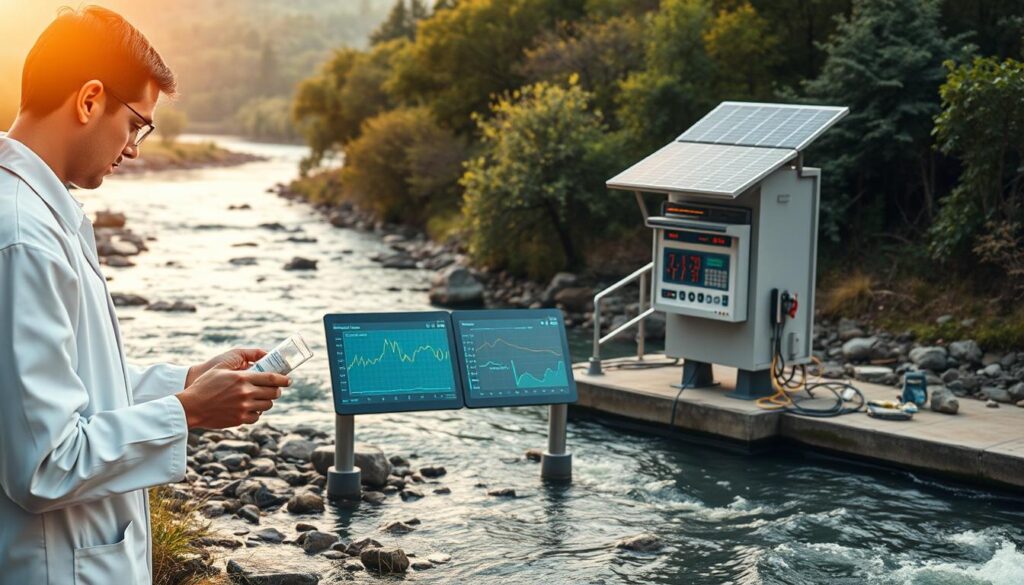
Post-implementation, the focus shifts to monitoring and maintaining the potable water infrastructure to ensure continued safety and efficiency. This phase is crucial for the long-term success of the potable water project.
Regular Inspection Guidelines
Regular inspections are vital to identify potential issues before they become major problems. These inspections should follow a scheduled timeline and include checks on the water treatment process, distribution system, and storage facilities.
Key areas to inspect include:
- Pipe conditions and integrity
- Pump functionality and performance
- Water quality monitoring equipment
- Storage tank conditions and security
Long-term Water Quality Monitoring
Long-term water quality monitoring is essential to ensure that the water remains safe for consumption over time. This involves regular sampling and testing at various points in the distribution system.
| Parameter | Frequency of Testing | Acceptable Limits |
|---|---|---|
| pH Levels | Weekly | 6.5 – 8.5 |
| Chlorine Residual | Daily | 0.2 – 1.0 mg/L |
| Bacterial Contaminants | Monthly | Absent |
Community Education and Outreach
Community education and outreach programs play a significant role in promoting water safety and proper use. These programs should inform the public about the importance of water conservation and the measures in place to ensure water quality.
Effective community education strategies include:
- Public workshops and seminars
- Distribution of informational materials
- Collaboration with local schools and community groups
By implementing these strategies, communities can ensure the continued supply of safe drinking water and promote a culture of water conservation.
Sustainability Considerations
A sustainable approach to potable water project design involves multiple facets, including water conservation and renewable energy integration. Ensuring the long-term viability of the water supply requires careful planning and implementation of sustainable practices.
Water Conservation Strategies
Implementing water conservation strategies is crucial for reducing demand on the potable water supply. This can be achieved through various methods, including the use of low-flow appliances and implementing water-saving technologies. For more information on water conservation techniques, visit https://www.wbdg.org/do/sustainable/conserve-water.
Effective water conservation strategies not only reduce the strain on existing water resources but also contribute to a more sustainable water management system. By adopting these strategies, communities can ensure a more reliable water supply for future generations.
Renewable Energy Integration
Integrating renewable energy sources into the potable water project design is essential for reducing the project’s carbon footprint. Renewable energy can be used to power water treatment and distribution systems, making the overall system more sustainable.
Examples of renewable energy sources include solar, wind, and hydroelectric power. By leveraging these energy sources, potable water projects can minimize their reliance on fossil fuels and contribute to a cleaner environment.
Environmental Stewardship Practices
Adopting environmental stewardship practices is vital for minimizing the ecological impact of potable water projects. This includes implementing measures to protect local ecosystems and wildlife habitats during the construction and operation phases.
Environmental stewardship practices also involve monitoring and mitigating the project’s impact on the surrounding environment. By doing so, potable water projects can ensure that they are not only providing clean water but also preserving the natural environment for future generations.
Future Trends in Potable Water Design
The future of potable water project design is poised to undergo significant transformations driven by emerging trends and technological innovations. As the world grapples with the challenges of ensuring global access to clean water, advancements in water treatment technology will play a crucial role.
Advancements in Treatment Technologies
Innovations such as membrane bioreactors and advanced oxidation processes are enhancing the efficiency and effectiveness of water treatment. These technologies enable the removal of a wider range of contaminants, improving the quality of treated water.
Smart Solutions for Water Management
The integration of smart water management solutions is revolutionizing the operational management of water infrastructure. Real-time monitoring and data analytics enable utilities to optimize water distribution, detect leaks, and predict maintenance needs.
Addressing Climate Change Impacts
Climate change poses significant challenges to water supply systems, with changing precipitation patterns and increased frequency of extreme weather events. Understanding and mitigating these impacts is crucial for ensuring the long-term sustainability of potable water projects.
By embracing future trends and innovations in water treatment technology, smart water management, and climate resilience, the water infrastructure development sector can ensure a more sustainable and reliable supply of potable water for generations to come.
